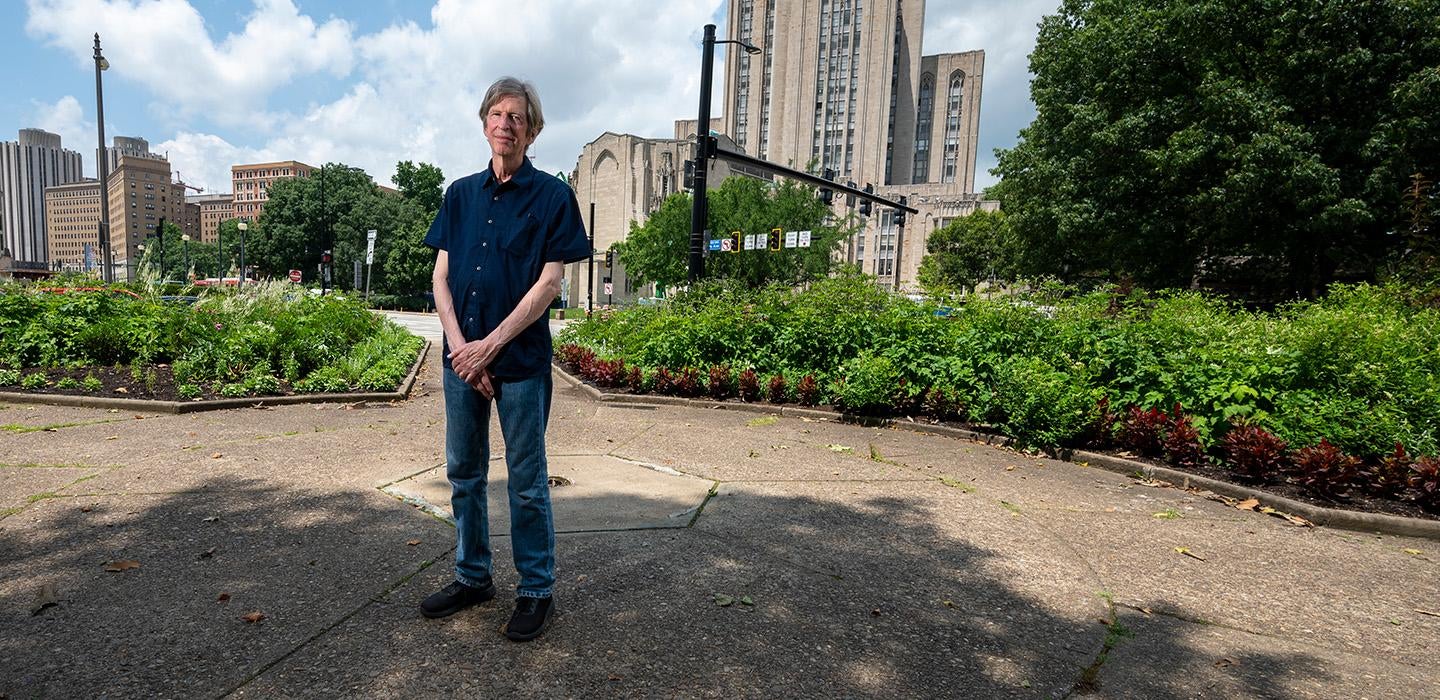
Subscribe to Pittwire Today
Get the most interesting and important stories from the University of Pittsburgh.When art historian Kirk Savage tucked a provocative suggestion into his 2009 book, “Monument Wars,” he figured it would go ignored or, perhaps, be written off as untenable. But, to his surprise, the public art world was ready to embrace the idea of ephemeral monuments; it just needed a push.
For Savage, a history of art and architecture professor in the Kenneth P. Dietrich School of Arts and Sciences, producing ephemeral, or temporary, public art is an opportunity to sidestep the often inscrutable process of placing permanent memorials and monuments and tap into in fresh ideas and more diverse voices.
The idea caught the attention of the National Capital Planning Commission (NCPC) in Washington, D.C., and Paul Farber, a co-founder of Monument Lab. Over the past several years, the planning commission and the public art nonprofit, alongside the Trust for the National Mall, have taken that seed and grown it into Beyond Granite, an initiative designed to “create a more inclusive, equitable and representative commemorative landscape on the National Mall.” The inaugural exhibition, Pulling Together, will place work from six contemporary artists of color in and around the Lincoln Memorial and Reflecting Pool from Aug. 18 to Sept. 18. The exhibition is funded by the Mellon Foundation and features artists Derrick Adams, Tiffany Chung, Ashon Crawley, vanessa german, Paul Ramírez Jonas and Wendy Red Star.
“We’re running an experiment,” said Savage, who sits on Monument Lab’s board. “And we’re about to see what happens.”
For nearly three decades, Savage has been quietly studying the impetus and impact of public monuments and memorials. His research was suddenly thrust into the spotlight in 2017 as the country grappled with the future of Confederate monuments, and he quickly became an in-demand expert, offering analysis and insight into a complicated national issue. In 2021, he was elected to the prestigious American Academy of Arts and Sciences.
Savage’s contention has always been that permanent, public art should reflect the experiences of the many rather than the specific agendas and ideals of a few. Only then can art truly represent history rather than obscuring it.
One way to accomplish that goal is to engage the public in the planning process. Another is to commission temporary works — or what Monument Lab refers to as prototypes — from a range of artists to “speak to society as its needs and perspectives change,” says Savage. Monument Lab seeks to do both.
Savage’s work with Monument Lab is one of many projects in which he is currently involved. He’s also co-authoring a book with his wife, Elizabeth Thomas, about a breakaway group from the Cherokee Nation that was able to resist and escape the Trail of Tears. Until now, that story has focused largely on Thomas’ great-great grandfather, a white man who acted as their agent, rather than the hundreds of Cherokees who took great risks to fight the relocation. And he recently penned a paper about a North Carolina man who, upon his death, gifted his land to the enslaved people who worked it as reparations. His family had the will reversed in court, establishing long-debated civil rights law in the state.
Though neither project specifically involves public art, they pull on the same thread that runs through all Savage’s research — seeking to give voice to those history made voiceless.
“They’ve been drowned out for too long,” Savage said.


